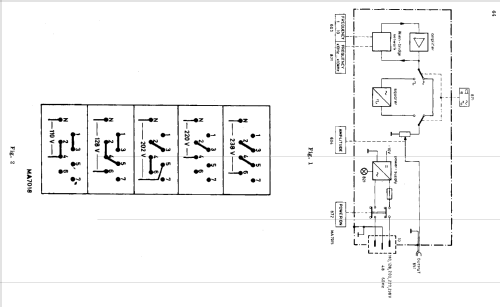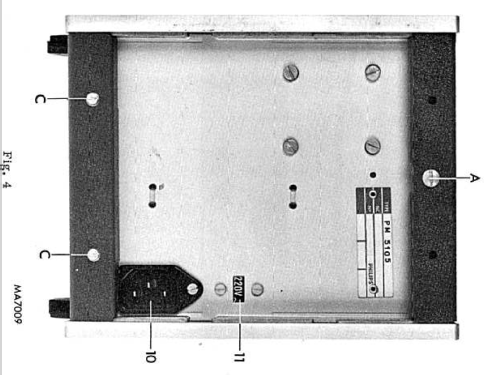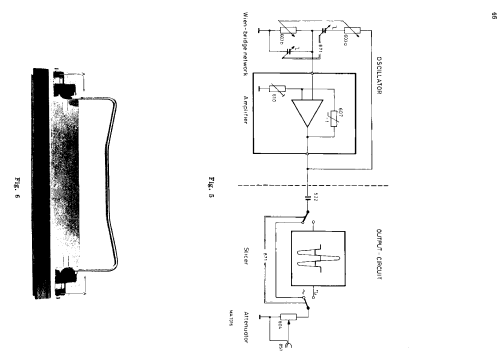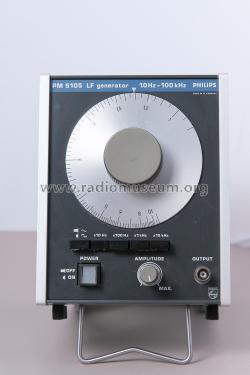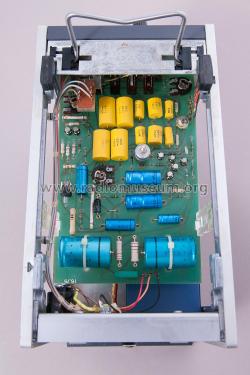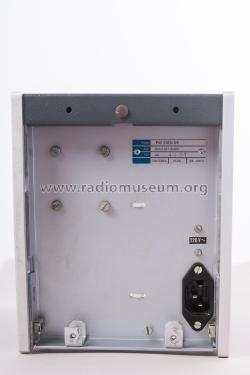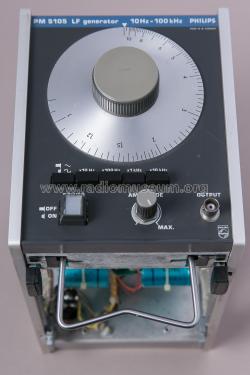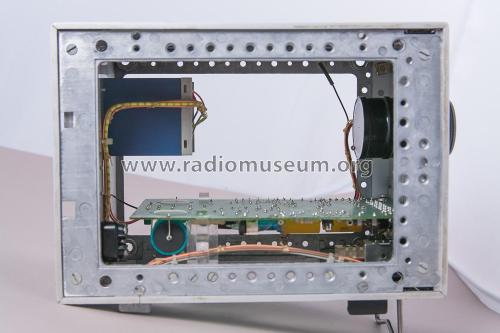LF Generator PM 5105/07
Philips Radios - Deutschland
- Pays
- Allemagne
- Fabricant / Marque
- Philips Radios - Deutschland
- Année
- 1970 ??
- Catégorie
- Appareils de mesure et de dépannage (matériel de labo)
- Radiomuseum.org ID
- 211148
-
- Brand: Deutsche Philips-Ges.
Cliquez sur la vignette du schéma pour le demander en tant que document gratuit.
- No. de transistors
- 12
- Semi-conducteurs
- Principe général
- Amplification audio
- Gammes d'ondes
- Bandes en notes
- Tension / type courant
- Alimentation Courant Alternatif (CA) / 110; 220 Volt
- Haut-parleur
- - Pour casque ou amplificateur BF
- Matière
- Boitier métallique
- De Radiomuseum.org
- Modèle: LF Generator PM 5105/07 - Philips Radios - Deutschland
- Forme
- Modèle de table générique
- Dimensions (LHP)
- 180 x 140 x 250 mm / 7.1 x 5.5 x 9.8 inch
- Remarques
- Philips LF-Generator PM5105;
Niederfrequenz-Generator 10 Hz bis 100 kHz in 4 Bereichen,
Kurvenform Sinus oder Rechteck umschaltbar,
Innenwiderstand/Impedanz 600 Ohm,
Ausgangsspannung max. 20 Vss, stufenlos regelbar (ungeeicht),
Ausgang unsymmetrisch auf BNC-Buchse.
Generatore di segnali LF (Low Frequency) da 10Hz a 100kHz con forma sinusoidale o rettangolare.
- Poids net
- 2.7 kg / 5 lb 15.2 oz (5.947 lb)
- Auteur
- Modèle crée par Antonio Marra. Voir les propositions de modification pour les contributeurs supplémentaires.
- D'autres Modèles
-
Vous pourrez trouver sous ce lien 2544 modèles d'appareils, 2256 avec des images et 1566 avec des schémas.
Tous les appareils de Philips Radios - Deutschland
Collections
Le modèle LF Generator fait partie des collections des membres suivants.
Contributions du forum pour ce modèle: Philips Radios -: LF Generator PM 5105/07
Discussions: 2 | Publications: 7
I have a Philips PM 5105 Low Frequencies Generator and I need some tips for the alignment.
I have the service manual but the alignment potentiometers and trimmers (610, 516, 513, 605 and 621-523) are not sufficient to make the equipment work as it should.
As an example, the 400 Hz scale is reading 316 Hz on my oscilloscopes (Hantek and Siglent).
1 KHz is reading 2,4 KHz on the oscilloscopes.
The tension on the diode 452 is -16,7 V as expected.
Maybe the equipment is consuming more than the specified: It should be 4,5 W but I did measure 7,1 W on a non reliable meter. The same device is measuring 80mA for the PM 5105.
I did try the equipment (the first time that I did turn it on) on a dim bulb tester and variac and it was OK.
I did try to adjust it on the trimmers according with the manual to no avail.
Are the electrolytics the culprits? Are the transistors?
Thanks,
Alvaro Georg
Alvaro Georg, 14.Mar.23
Diesen Generator habe ich an Schulen inkl. Fachhochschule, in Lehrwerkstätten und auch in Reparatur Werkstätten angetroffen. Der Grund ist einfach:
- Klare und einfach Bedienung
- sehr sauberes Sinus Signal mit tiefem Klirrfaktor dank Wienbrücke
- einfache und dennoch robuste Schaltungstechnik
- sehr reparaturfreundlich, gut dokumentiert und gängige, gut beschaffbare Teile
- erstaunlich lange Lebensdauer, hält sich gut , kein Rost, dafür langlebige Bauteile
Für mich ein tolles Stück Analogtechnik. Besonders erfreulich, dass nun im Netz auch noch das Service Manual zu finden war.
Wünsche jedem Besitzer viel Freude an diesem tollen Generator.
Hermann Mettler, 05.May.21
